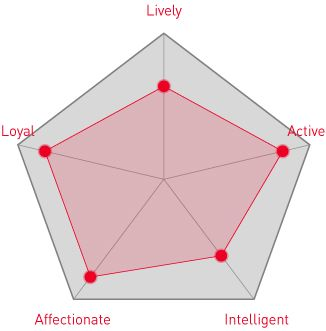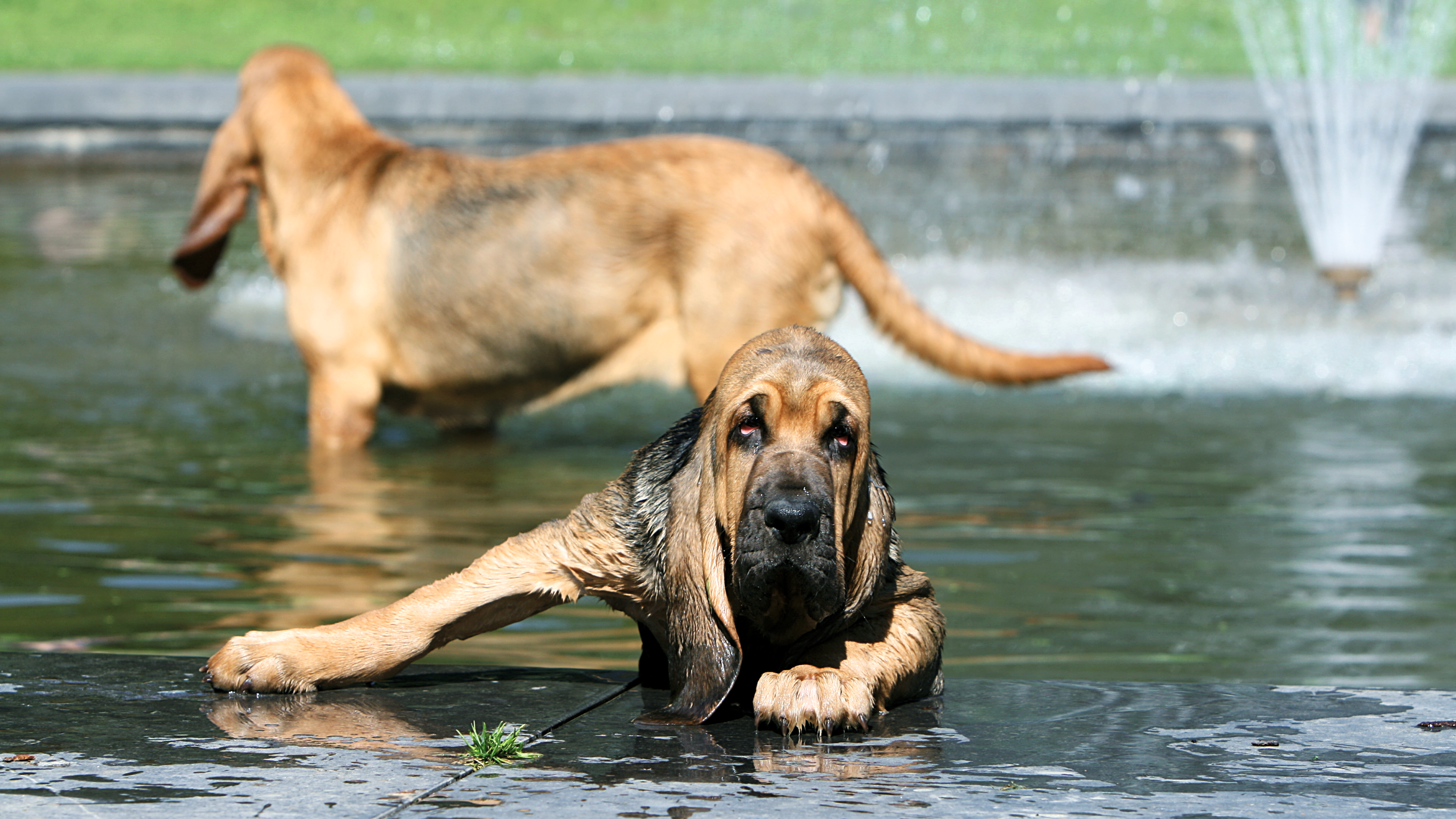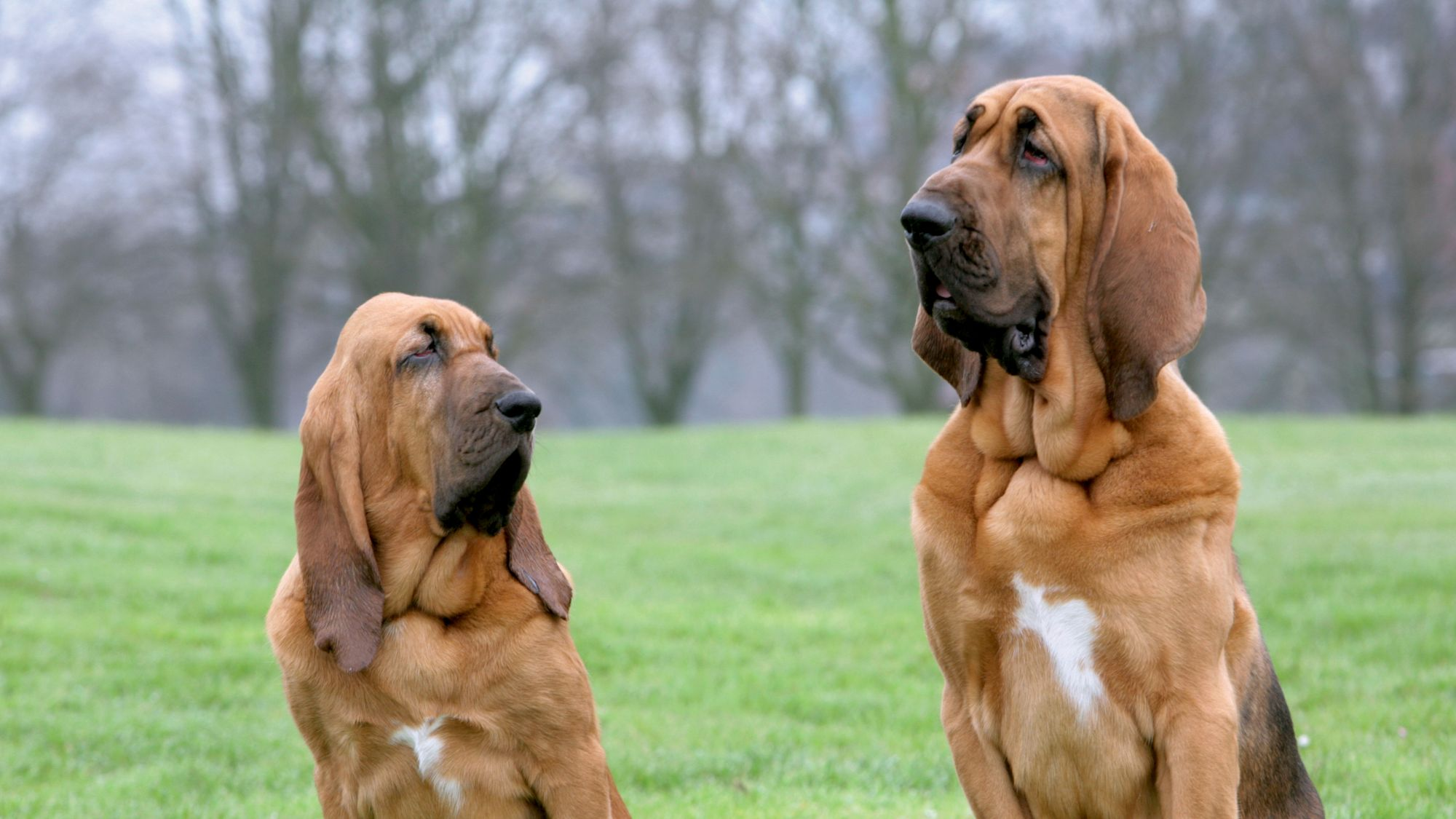
Let's talk Bloodhounds
The Bloodhound is often described as “a nose with a dog attached” but while it’s true their sense of smell is extraordinary, there is much more to this breed besides. Don’t be fooled by the Bloodhound’s lugubrious expression, they also have a tremendous fun side. They are dutiful, sure – as a scent-tracking canine super-sleuth, they have proved their reliability to humans over many centuries – but they are also affectionate and playful. Just watch out for the drool.Official name: Bloodhound
Other names: None
Origins: Belgium

| Drooling tendencies |
|
Warm weather? |  |
| Shedding level |  |
Suited to apartment living? | |
| Energy level (high, low, medium) *: | High | Family pet? * |
|
| Compatibility with other pets | Can stay alone?* |
* We advise against leaving pets alone for long stretches. Companionship can prevent emotional distress and destructive behaviour. Speak to your veterinarian for recommendations.
Every pet is different, even within a breed; this snapshot of this breed’s specifics should be taken as an indication.
For a happy, healthy and well-behaved pet, we recommend educating and socialising your pet as well as covering their basic welfare, social and behavioural needs.
Pets should never be left unsupervised with a child.
All domestic pets are sociable and prefer company. However, they can be taught to cope with solitude from an early age. Seek the advice of your veterinarian or trainer to help you do this.


| Baby age: | Birth to 2 months |
| Puppy age: | 2 to 15 months |
| Adult age: | 15 months to 5 years |
| Mature age: | 5 to 8 years |
| Senior age: | From 8 years |

1/7
Get to know the Bloodhound
All you need to know about the breed
The phrase “Gentle Giant” could have been invented for the Bloodhound, a peerless scent tracker who will brave the elements and never give up in the search of a missing person but is just as content curled up in the warm with his human family.
Bloodhounds date back well over a thousand years and were originally prized for their ability to track animals’ scent. In more recent times, their smelling superpowers have seen them put to work as a police dog and tracker of criminals and missing persons.
With their ‘gloomy’ expression – big expressive eyes and impressively, extravagantly droopy ears – you would be forgiven for expecting an Eeyore-like personality. But although they are docile and patient, as pack animals, Bloodhounds are also friendly and sociable. Once trained, they get on well with other animals and children – just make sure they’re supervised: these big solid dogs could easily knock over little ones.
Bloodhounds also drool. A lot. Be warned—and invest in easy-to-clean home furnishings. Bloodhounds are really not suited to living in an apartment—they need a safe, enclosed outdoor space to sniff around and explore.
You don’t earn a reputation as a canine super-sniffer without a determined streak, and Bloodhounds are known to be single-minded and independent. They need consistent, firm but positive training from an early age. They still shouldn’t be let off the lead in unfamiliar places: Once they find a scent, almost nothing will throw them off it.

2/7
2 facts about Bloodhounds
1. A Nose For Justice
A trained Bloodhound is the first animal whose evidence is admissible in some US courts, according to the Guinness World of Records. With typically 230 million scent receptors – about 40 times more than the human nose – a Bloodhound’s nose can match crime scene evidence to defendants.
2. Canine Waste Disposal Unit
The Bloodhound may be dutiful, dedicated, a hero in fact—but even heroes have their bad habits. The Bloodhound’s is eating things. Things that aren’t food, that is: Remote controls, bits of Lego—you name it, if you leave it within your Bloodhound’s reach (and that’s pretty high, they’re big dogs) it’s fair game. So be warned, if you want to avoid unscheduled trips to the vet. And you do want to!
History of the breed
The Bloodhound is an ancient breed, said to date back at least a thousand years to the Ardennes region, in Belgium, where they were bred by the monks of the Abbey of Saint Hubert (who was later canonised as the patron saint of hunters) to track game using their legendary sense of smell.
The breed may in fact have even earlier origins—3rd century texts refer to a hound known in the Mediterranean region for its extraordinary scenting powers. The blood part of the Bloodhound’s name is thought to refer to their pure blood or breeding and they got their name after they were brought to the United Kingdom in the Norman invasion of 1066.
In the centuries since, Bloodhounds have become dutiful helpers to their humans as police dogs: That famous nose, combined with strength, stamina and determination can’t be topped and they are still used to search for missing persons in countries including the US and Canada.

4/7
From head to tail
Physical characteristics of Bloodhounds
1. Head
Large head with imposing muzzle and huge drooping ears.
2. Face
Doleful expression: Huge soulful eyes and furrowed brow.
3. Skin
Wrinkly skin with multiple deep folds.
4. Body
Solid, strong body with a thick, straight tail.
5. Coat
Dense coat in black-and-tan, liver-and-tan or red.

5/7
Things to look out for
From specific breed traits to a general health overview, here are some interesting facts about your Bloodhound

6/7
Caring for your Bloodhound
Grooming, training and exercise tips
Bloodhounds have short, dense coats that need weekly brushing to remove loose hair. They also need regular baths, no matter what that pained expression seems to be trying to tell you on the subject. Bloodhounds are big, strong dogs and they need a good amount of exercise. Training your Bloodhound will require patience as they can be independent and stubborn – useful if you want them to trek tirelessly across the moors in search of a missing hiker, less so if you’re simply trying to keep them off the sofa – so plenty of positive reinforcement is the way to go. Bloodhounds, like many other breeds, benefit from socialisation as puppies to learn to get along with other dogs and people, whether that’s through puppy classes or trips to the park. Once trained, Bloodhounds get on well with people, including children, as well as other animals.7/7
All about Bloodhounds
Yes—with a caveat. They’re high-maintenance additions to any family. Although once trained, Bloodhounds get on well with children, they’re also stubborn and independent-minded, they take up a lot of space, need plenty of exercise, and they drool and shed. If that doesn’t put you off, you’re in for a lot of fun with a dog whose personality is as big as their ears.
They aren’t known to be. While Bloodhounds are certainly imposing in stature and known for being stubborn (ahem, they prefer ‘determined’ thank you very much), they are not known to be aggressive and once trained, make a placid, patient and gentle addition to the family.
Read more on this topic


How to adopt a dog

Things to consider before getting a dog
Sources
1 - Veterinary Centers of America https://vcahospitals.com/
2 - Royal Canin Dog Encyclopaedia. Ed 2010 and 2020
3 - Banfield Pet Hospital https://www.banfield.com/
4 - Royal Canin BHN Product Book
5 - American Kennel Club https://www.akc.org/